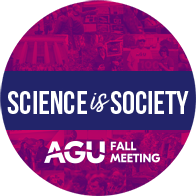In northeastern Oklahoma, heavy metal contaminants from mining waste associated with the Tar Creek Superfund site have threatened community health for decades. For her senior honors thesis, Wellesley College undergraduate Claire Hayhow used a participatory approach to address community concerns and trace the spread of heavy metals from the Ottawa County site.
First occupied by the Quapaw Indigenous people, the 1,188-square-mile (3,077-square-kilometer) site was mined for lead and zinc in the early to mid-1900s. Mining waste (chat) piles and seepage containing lead, zinc, and cadmium led the EPA to declare Tar Creek a Superfund site in 1983. Since then, Indigenous leaders and community activists have advocated to speed remediation efforts. They’ve also supported increasing the size of the remediation site (and, by extension, its funding for cleanup) by arguing that pollutants have spread far beyond the initial mining site and waste piles. Hayhow and her team partnered with the nonprofit Local Environmental Action Demanded (LEAD) agency, which gathered community feedback, including Indigenous perspectives.
“If I were to summarize my understanding of what LEAD wants, it’s a livable community where you can fish in the creek and swim in the creek and subside off of food that’s grown in the floodplains—and to have that happen yesterday.”
“If I were to summarize my understanding of what LEAD wants, it’s a livable community where you can fish in the creek and swim in the creek and subside off of food that’s grown in the floodplains—and to have that happen yesterday,” Hayhow said.
One immediate concern researchers were able to alleviate was the safety of mushrooms and spent mushroom compost from a nearby farm. The compost is used to remediate contaminated floodplains at the site and tested far below EPA-established limits for lead in soil. The mushrooms themselves had lower lead levels than an out-of-state grocery store brand.
Wind and Water
Researchers also identified barium and calcium as geochemical tracers for wind-borne and waterborne lead, respectively, using samples previously collected from the floodplain. The elements tend to increase proportionately with lead, and the ratio of these elements in contaminated substrates can help identify whether lead present in soil spread through wind or water.
It’s an important distinction, according to Junran Li, an associate professor at the University of Tulsa who has also researched wind-borne lead at Tar Creek but was not involved in the new study. Li said past efforts to study the chat piles focused on contamination of nearby streams, lakes, and groundwater.
“As the Tri-state area is generally wet, wind erosion attracts little attention,” he wrote in an email. “However, these chat piles are free of vegetation coverage, and contain large amounts of fine particles. Located close to the Tornado Alley, northeastern Oklahoma and surrounding areas are notorious for variable extreme weather conditions including wind storms and tornadoes, which may lead to substantial airborne contaminants in this area.”
Whether lead is transported through wind or water also influences how bioavailable it is, added Dan Brabander, a professor of environmental science and geosciences at Wellesley and the study’s principal investigator. Along with the level of concentration, these data could influence remediation efforts across the globe.
“We’re trying to ask the question, in terms of delivering metals to places where people live, ‘Is the bioavailable fraction of lead the same for these different transport processes?’ That is a question that is much bigger than Tar Creek,” he said.
Equally important, according to Brabander, is the study’s focus on addressing Oklahomans’ concerns in a participatory way. “I think justice is what [community members] are looking for,” he said. “And I think you don’t need fancy geochemical tools to find justice.”
Hayhow, who has graduated from Wellesley since the study’s completion, will present a poster based on her research on 14 December during AGU’s Fall Meeting 2021.
—Robin Donovan (@RobinKD), Science Writer


